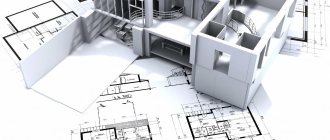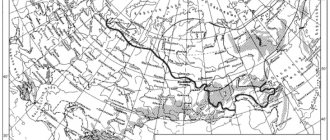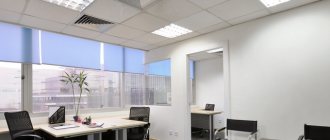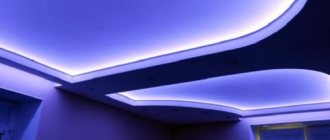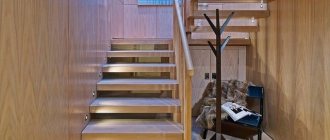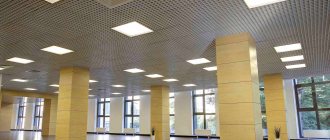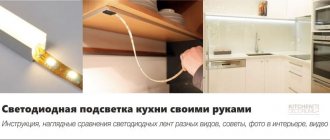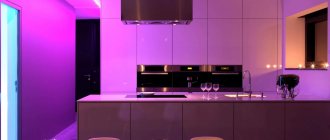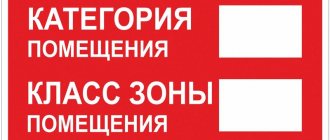In the modern world, architectural lighting of building facades is not just a fashionable trend, but also an urgent necessity. At night, spotlights and façade lamps help you navigate the space and safely park your car. This applies both to architectural lighting of the facades of private houses and country cottages, and to the lighting of multi-storey buildings in big cities. If we consider facade lighting from the point of view of aesthetics and marketing, then it not only decorates the building, but also sets it apart from other buildings.
General tasks of facade lighting
The main task of decorative facade lighting is to add color to the building, favorably emphasizing its architectural features and style in design. Combining different types of decorative lighting makes it possible to “play” with light, completely changing the appearance of the building.
With the development of electronic technologies, lighting of building facades ceases to be just a beautiful decoration of houses. Modern architectural home lighting performs many important functions:
- Improves the perception of the local area and areas near buildings;
- Warns of dangers on the roads.
Designers also focus not only on the aesthetics of the building, but also on safety, creating a special atmosphere near buildings, shopping centers and entertainment complexes. Facade lighting can be designed both at the stage of construction of houses and after the commissioning of the facility.
Features of architectural lighting of buildings
Previously, artistic lighting of houses was considered one of the areas of architectural design. Over time, façade lighting has become brighter and more efficient, and its role in city life has changed: today LED architectural luminaires illuminate streets along with lanterns.
An additional advantage of lighting devices is that structures become more visible against their background. Therefore, illumination of buildings helps to increase the value of real estate and attract the attention of investors to them, which, in turn, has a positive effect on business development and becomes an advantage for local entrepreneurs.
Types of architectural lighting
The method of placing facade lighting of a building depends on the purpose of the architectural project, its features and style solution. Designing architectural lighting is a complex task that only professionals can handle. When making calculations, a variety of factors are taken into account: the type of object, its purpose, area, as well as what exterior details should be highlighted. Taking into account the finishing features, location and layout of the structure, you can choose the appropriate type of decorative lighting.
Types of architectural lighting:
1. Local
This type of lighting solution is used to illuminate architectural monuments, sports grounds and shopping and entertainment centers. When choosing local lighting, it is important to correctly select the power of the lamps to prevent blinding people. The design can include lamps of different types that complement each other.
2. Background frame of the facade
Illumination highlights individual architectural elements - columns, stucco, statues supporting the base of the structure - giving them a more decorative appearance. As a rule, in this case, single lighting devices are used - LED spotlights, spotlights for facades.
3. Contour light
The method of contour lighting of walls and ends of buildings has long been recognized by decorators. Due to the light shimmer, such artistic lighting looks impressive and harmonious both in the daytime and in the evening and night. Suitable for decorating holidays and holding public events.
4. Single luminous flux
Shopping complexes, fitness clubs and other buildings with large panoramic windows can take on different shapes thanks to internal lighting. The lamps are installed near window openings, creating the effect of an “aquarium” design.
5. Artistic architectural lighting
A mixture of styles and designs occurs not only in the interior, but also in the lighting of facades. Creative artistic lighting, combining several styles, is most often used for the visual design of historical and cultural objects.
6. Dynamics in detail
RBG lamps allow you to highlight individual areas of the building. By switching different modes of light, scenery and color, they create a powerful visual accompaniment. This is where you can go wild in terms of design and aesthetics when decorating the facade!
7. Solid light fill
With the help of such architectural lighting, you can advantageously emphasize the outlines of the house without placing emphasis on it. When finishing the facade, flexible neon and lamps with a plastic base are most often used, which can be easily mounted on the frame of buildings. If the walls of an object have subtle defects, these defects will not be visible when installing the backlight.
Lighting equipment should fit organically into the architecture of the building, emphasizing its strengths. Therefore, an architectural lighting project is developed by a team of specialists, including engineers and designers.
Statics and dynamics. DMX technology
Despite the fact that architectural lighting is used only at night, and in Russia the daylight hours in winter are short, today static lighting of buildings is not economically viable. To save energy on weekdays, less resource-intensive light sources should be used, and on holidays and weekends, on the contrary, a bright non-standard glow allows you to distinguish a building from others and attract attention with the play of colors. To do this, they use DMX technology, which allows you to control the light dynamics.
The essence of technology
DMX was originally the standard for lighting in the cinema and exhibition industries. Today this technology is also used in architecture. It allows you to control different groups of lamps, brightness and color of light. Separate groups can be, for example, the roof, facade, columns, window openings, contour lighting, etc. Within each group there are subgroups - by brightness, color, etc.
At the same time, for everyday life, the glow of one group is enough (you can set the optimal intensity), and on holidays, weekends, festivals, significant sports or other events, you can turn on all groups, increase the intensity of their glow, and also create various color shifts - a smooth or sharp transition one color to another, mixing colors and other effects. Grouping reduces the resource intensity of an individual lamp that has one signal; it is assigned one address - as a result, the overall cost is reduced.
Special equipment is used to control the dynamics of light.
More details in our video:
Types of lamps used
Architectural lamps that are installed outside (on the facades of buildings) are subject to fairly stringent requirements:
- The housings of lighting fixtures must be made of stainless steel or another equally durable metal.
- Important parameters are tightness, protection from moisture and dust (protection degree IP65 and higher), frost resistance and resistance to mechanical damage.
- Lamps must be fireproof and not overheat during prolonged operation, even in hot weather;
- Valuable advantages will be ease of use, installation and maintenance, as well as long service life (since replacing façade lighting is always expensive).
Based on the type of housing, façade luminaires are divided into linear and spot. In addition, lamps can differ in size, number of light sources (diodes), body shape, power, color temperature and other parameters.
Most often, LED lamps are used for architectural and artistic lighting of buildings. They are economical and durable, are not afraid of temperature changes and have greater luminous power.
Rules for illuminating objects and requirements for its installation
Facade lighting should be selected taking into account the parameters of the building and its architectural features - so that there is no effect of artificial refraction of light, as a result of which the facade will look unnatural.
Installation of lighting equipment takes place in several stages:
- Creating a project for architectural lighting of a building: taking into account the features and nature of the building - a monument, shopping center or cultural site.
- Preparation of documentation in accordance with the standards of the devices used - spotlights, lamps with a dispersion angle from 10 to 60 degrees and a brightness of no more than 10 candelas per 1 sq. m. The remaining requirements for architectural lighting of the facade of objects can be considered as part of individual work when designing buildings.
- Direct work on installation (installation) of lamps.
Advantages of working as industrial climbers
- Save time. Thanks to special equipment, climbers can easily move along the façade, thereby saving time on work. It also saves time on equipment installation (preparatory work takes no more than an hour).
- Saving money. The services of industrial climbers cost several times less than the use of expensive equipment.
- Efficiency of work execution.
- Industrial climbers will fix lighting equipment in any part of the facade.
- There is no need to involve many workers: fitters, electricians; there is no need to build scaffolding, since steeplejacks do all the work themselves.
A distinctive feature of our company is ensuring safety and quality while performing work. We constantly conduct seminars and training courses to improve the skills of our employees. We take installation work at height with great responsibility, because this is the main activity of our company.
Installation requirements
Properly performed installation work will help to avoid difficulties during further operation and maintenance of the facility. And errors in the installation of LED lamps, in turn, lead to premature failure of the equipment.
Features of the organization of illumination of building facades:
- Historical monuments and leisure centers are often decorated in a brighter, festive style. This way they attract more attention and fulfill the true intent of the designers.
- When designing lighting, it is important to consider what materials were used in construction and decoration: glass, metal, concrete or brick.
- As a rule, lamps are mounted in the upper part of the facade - for soft dispersion of light.
- When installing luminaires, it is necessary to ensure free access to wires and power supplies. During equipment maintenance and repair, this factor plays an important role.
When designing architectural lighting, various additional devices can be used. The use of specialized software, sensors and light control systems can reduce energy costs and increase the efficiency of lighting of buildings and structures.
From us you can order everything you need for high-quality architectural lighting of building facades - we work in Moscow, St. Petersburg, in all regions of Russia and in neighboring countries!
Illumination standards for some categories according to SNiP 23-05-95
Illumination standards are indicated in lux for the working surface: if it is an office, reading room or work area, then this is the height of the table (this height is usually 0.8 meters from the floor - G-0.8); if this is a staircase, a lobby, a gym, a road - then this is: the floor, the road surface (G-0.0).
| Lighting of streets, roads and squares. | ||
| Illuminated objects | Average illumination Ecp, lux not less | Illumination distribution Emin / Eсr not less |
| A1 class. Highways, federal and transit routes, main city thoroughfares (outside the city center) - with a throughput capacity of more than 10,000 units/hour | 30 | 0,35 |
| A2 class. Other federal roads and main streets (outside the city center) - with a throughput of 7,000 - 9,000 units/hour | 20 | 0,35 |
| A3 class. Central highways connecting streets with access to the A1 highway (in the city center) - with a throughput capacity of 4,000 - 7,000 units / hour | 20 | 0,35 |
| A4 class. The main historical passages of the center, internal connections of the center (in the city center) - with a throughput of 3,000 - 5,000 units / hour | 20 | 0,35 |
| B1 class. Main roads and streets of the city of regional significance (outside the city center) - with a throughput capacity of 3,000 - 5,000 units / hour | 20 | 0,35 |
| B2 class. Main roads and streets of the city of regional significance (in the city center) - with a throughput capacity of 2,000 - 5,000 units / hour | 15 | 0,35 |
| B1 class. Transport and pedestrian connections within residential areas and access to highways, except for streets with continuous traffic (residential developments outside the city center) - with a throughput capacity of 1,500 - 3,000 units/hour | 15 | 0,25 |
| B2 class. Transport and pedestrian connections in residential neighborhoods and access to highways (residential developments in the city center) - with a throughput capacity of 1,500 - 3,000 units/hour | 10 | 0,25 |
| B3 class. Transport connections within industrial and communal warehouse zones (in urban industrial, communal and warehouse zones) - with a throughput capacity of 500 - 2,000 units/h | 6 | 0,25 |
| Separate tram track | 10 | — |
| Main streets, public squares and shopping centers | 10 | — |
| Main residential streets | 6 | — |
| Secondary (alleys) residential streets | 4 | — |
| Village roads, driveways on the territory of gardening partnerships and dacha cooperatives | 2 | — |
| Lighting of pedestrian spaces. | ||
| Illuminated objects | Average illumination Ecp, lux not less | Illumination distribution Emin / Eсr not less |
| Areas in front of the entrances of cultural, sports, entertainment and shopping facilities, sports, entertainment and shopping facilities | 20 | 0,30 |
| The main pedestrian streets of the historical part of the city and the main public centers of administrative districts, impassable and in front of factory squares, landing areas, children's and recreation areas | 10 | 0,30 |
| Pedestrian streets, main and auxiliary entrances of parks, sanatoriums, exhibitions and stadiums | 6 | 0,20 |
| Sidewalks separated from the roadways of roads and streets, main passages of microdistricts, entrances, passages and central alleys of children's, educational and health care institutions | 4 | 0,20 |
| Secondary passages in the territories of microdistricts, utility areas in the territories of microdistricts, side alleys and auxiliary entrances of city-wide parks and central alleys of parks of administrative districts | 2 | 0,10 |
| Side alleys and auxiliary entrances of parks of administrative districts | 1 | 0,10 |
| Lighting of underground and overground pedestrian crossings. | ||
| Illuminated objects | Average illumination Ecp, lux not less | Illumination distribution Emin / Eсr not less |
| Overhead pedestrian crossings with transparent walls and ceilings or glazed wall openings | 75 | 0,30 |
| Staircases, ramps and viewing platforms for elevated pedestrian crossings with transparent walls and ceilings or glazed wall openings | 50 | 0,30 |
| Stairs and ramps of underground pedestrian crossings and tunnels | 45 | 0,30 |
| Open footbridges | 10 | 0,30 |
| Lighting of gas stations, their entrances and parking and storage areas for vehicles. | |
| Illuminated objects | Average illumination Ecp, lux not less |
| Access roads from roads of category A and B | 15 |
| Access roads from category B roads | 10 |
| Places for refueling and discharging petroleum products | 20 |
| The rest of the territory with a roadway | 10 |
| Open parking on streets of all categories, as well as paid off-street parking, open parking in neighborhoods, driveways between rows of box-type garages | 6 |
| Lighting of administrative buildings. | |
| Illuminated objects | Average horizontal illumination not less than, lux. |
| Offices, workrooms, representative offices | 300 |
| Design rooms and design rooms, drawing bureaus | 500 |
| Typewriting bureaus | 400 |
| Premises for visitors, expeditions, staff premises | 400 |
| Reading rooms | 400 |
| Premises for recording and registration of readers, thematic exhibitions, new arrivals | 300 |
| Reader's catalogs | 200 |
| Language labs | 300 |
| Book depositories, archives, open access funds | 75 |
| Bookbinding and bookbinding premises with an area of no more than 30 sq. m | 300 |
| Photocopying premises with an area of no more than 30 m2 | 300 |
| Modeling, carpentry, repair shops | 300 |
| Rooms for working with displays and video terminals, computer rooms | 400 |
| Conference rooms, boardrooms | 200 |
| Foyers and vestibules | 150 |
| Laboratories of organic and inorganic chemistry, preparatory | 400 |
| Analytical laboratories | 500 |
| Weighing, thermostatic | 300 |
| Scientific and technical laboratories (except for medical institutions): thermal, physical, spectrographic, stylometric, photometric, microscopic, X-ray, X-ray structural analysis, mechanical, radio measuring, electronic devices | 400 |
| Photo rooms, distillation rooms, glass blowing rooms | 200 |
| Sample archives, reagent storage | 100 |
| Washing | 300 |
| Illumination of educational institutions. | |
| Illuminated objects | Average horizontal illumination not less than, lux. |
| Classrooms, offices, auditoriums of secondary schools, boarding schools, secondary specialized and vocational institutions, laboratories, classrooms for physics, chemistry, biology and others | 500 |
| Auditoriums, classrooms, laboratories of technical schools and higher educational institutions | 400 |
| Informatics and computer science classrooms | 200 |
| Technical drawing and painting classrooms | 500 |
| Laboratory assistants in classrooms | 400 |
| Laboratories of organic and inorganic chemistry, preparatory | 400 |
| Metal and wood processing workshops | 300 |
| Instrumental room, master instructor room | 300 |
| Cabinets for service types of labor | 400 |
| Sport halls | 200 |
| Equipment, inventory, utility storerooms | 50 |
| Indoor pools | 150 |
| Assembly halls, cinema auditoriums | 200 |
| Stages of assembly halls, offices and rooms of teachers | 300 |
| Recreation | 150 |
| Illumination of children's preschool institutions. | |
| Illuminated objects | Average horizontal illumination not less than, lux. |
| Reception rooms, changing rooms | 200 |
| Group, games, dining rooms, music and gymnastics rooms | 400 |
| Sleeping | 150 |
| Isolators, rooms for sick children | 200 |
| Chambers, sleeping rooms | 100 |
| Sports games halls, aerobics, gymnastics, wrestling, bowling alleys | 200 |
| Pool hall | 150 |
| Lighting of public catering establishments. | |
| Illuminated objects | Average horizontal illumination not less than, lux. |
| Dining rooms of restaurants, cafes, bars, canteen buffets, snack bars | 200 |
| Handouts | 300 |
| Hot, cold, pre-cooking, procurement shops, washing dishes | 200 |
| Confectionery shops, premises for flour products | 300 |
| Making chocolate and candies | 400 |
| Production of ice cream and drinks | 300 |
| Preparation of products, packaging of finished products, order fulfillment | 200 |
| Loading rooms, storage rooms | 75 |
| Illumination of hotels. | |
| Illuminated objects | Average horizontal illumination not less than, lux. |
| Service bureau, premises for on-duty service personnel | 200 |
| Living rooms, rooms | 150 |
| Lighting of medical institutions. | |
| Illuminated objects | Average horizontal illumination not less than, lux. |
| Patient reception rooms, offices of other medical specialists | 300-500 |
| Operating rooms | 400 |
| Laboratory, preparation, treatment rooms | 300 |
| Registry | 200 |
| Sterilization and washing rooms | 200 |
| Waiting rooms, wards | 150 |
| Storage areas for medicines and dressings | 150 |
| Corridors, staircases | 100 |
| Washbasins, latrines, smoking rooms | 75 |
| Showers, dressing rooms, stairs | 50 |
| Illumination of pharmacies | |
| Illuminated objects | Average horizontal illumination not less than, lux. |
| Assistant, aseptic, analytical, packaging, procurement of concentrates and semi-finished products, control and marking | 500 |
| Prescription department, manual sales, optics, finished medicines departments | 300 |
| Area for visitors in the service hall, sterilization, washing | 200 |
| Storage areas for medicines, dressings and utensils | 150 |
| Storage room for acids, disinfectants, flammable and flammable liquids | 75 |
| Pantry containers | 50 |
| Lighting for public service enterprises | |
| Illuminated objects | Average horizontal illumination not less than, lux. |
| Baths: waiting - cooling; | 150 |
| Baths: changing rooms, washing rooms, showers, steam rooms; | 75 |
| Baths: swimming pools | 100 |
| Hairdressing salons: men's, women's halls | 400 |
| Hairdressers: beauty salon | 500 |
| Photos: receiving and issuing orders; | 200 |
| Photos: studio photo studio; | 100 |
| Photos: darkrooms, solution preparation and silver regeneration rooms | 200 |
| Laundries: receiving and issuing linen, washing, preparing solutions, packaging linen | 200 |
| Laundries: linen storage | 75 |
| Laundries: storage of washing materials | 50 |
| Laundries: drying and ironing departments: | 300 |
| Laundries: laundry repair | 750 |
| Self-service laundries | 200 |
| Clothes dry cleaning studio: acceptance and delivery of clothes, dry cleaning premises | 200 |
| Dry cleaning shop: stain removal | 500 |
| Dry cleaning shop: storage of chemicals | 50 |
| Ateliers for sewing and repairing clothing and knitwear: sewing shops, cutting departments, clothing repair departments | 750 |
| Atelier for sewing and repairing clothes and knitwear: departments for preparing applied materials, ironing, decating | 300 |
| Atelier for sewing and repairing clothes and knitwear: hand and machine knitting departments | 500 |
| Repair shops | 750 |
| Recording studio | 200 |
| Lighting of shops. | |
| Illuminated objects | Average horizontal illumination not less than, lux. |
| Supermarket sales areas | 500 |
| Trading floors of stores without self-service: food, bookstores, ready-made clothes, linen, shoes, fabrics, fur products, hats, perfumes, haberdashery, jewelry, electrical, radio goods, toys and stationery | 300 |
| Trading areas of grocery stores and self-service stores | 400 |
| Trading floors of stores: tableware, furniture, sporting goods, building materials | 200 |
| Fitting booths, halls for demonstrating new products | 300 |
| Order departments, service bureaus | 200 |
| Premises for preparing goods for sale: cutting, packaging, picking order departments | 200 |
| Premises for preparing goods for sale: fabric cutting rooms, ironing rooms, shop workshops, radio and electrical goods workshops | 300 |
| Main ticket office premises | 300 |
| Finished dress fitting workshops | 400 |
| Advertising and decoration workshops, equipment and inventory repair workshops, scraper premises | 300 |
| Lighting of banking and insurance institutions | |
| Illuminated objects | Average horizontal illumination not less than, lux. |
| Operations room, credit group, cash room, money counting rooms | 400 |
| Premises of the collection department, collection office | 300 |
| Pre-storage room, valuables storeroom, depository | 200 |
| Server room, premises for interbank electronic settlements, e-mail, premises for cryptographic protection equipment | 400 |
| Input cable equipment room | 200 |
| Room for alphanumeric printing devices, personalization booths | 400 |
| Room for production, processing and storage of identification cards, premises of the processing center for plastic cards | 400 |
| Premises for serving individuals | 300 |
| Safe room | 150 |
| Observation corridor | 75 |
| Illumination of residential buildings. | |
| Illuminated objects | Average horizontal illumination not less than, lux. |
| Living rooms, living rooms, bedrooms, living rooms of dormitories | 150 |
| Kitchens, kitchen-dining rooms, kitchen-niches | 150 |
| Children's | 200 |
| Offices, libraries | 300 |
| Indoor corridors, halls | 50 |
| Storerooms, utility rooms | 300 |
| Dressing rooms | 75 |
| Sauna, changing rooms, swimming pool | 100 |
| Gym | 150 |
| Billiard room | 300 |
| Bathrooms, toilets, toilets, showers | 50 |
| Concierge room | 150 |
| Stairs | 20 |
| Floor-by-floor non-apartment corridors, lobbies, elevator halls | 30 |
| Strollers, bicycles | 30 |
| Heating points, pumping stations, electrical switchboards, elevator machine rooms, ventilation chambers | 20 |
| Main passages of technical floors, undergrounds, cellars, attics | 20 |
| Elevator shafts | 5 |
| Lighting standards for industrial premises. | ||
| № | Illuminated objects | Average illumination Ecp, lux not less |
| 1. Foundries for the production and repair of machines, mechanisms, metal structures and metal products | ||
| 1.1 | Copper department (crushing of scrap metal). Charge yard, site, lift working platform. Passages around the workshop and approaches to workplaces | 75 |
| 1.2 | Mixing preparation department Conveyors | 30 |
| 1.3 | Mix preparation department Beguny | 200 |
| 1.4 | Mixing preparation department Rollers, sieves. Rod compartment. Molding department - general level of illumination in the department. Making molds, assembling flasks, setting cores for large and medium castings. Technological processing of models, drying. Knockout department is the general level of illumination in the department. Mechanical knocking out of molds and cores from flasks | 150 |
| 1.5 | The molding department produces molds for casting according to models. | 300 |
| 1.6 | Rod compartment for drying and storing rods. Molding department supplying flasks and molds for filling | 50 |
| 1.7 | Melting and pouring department area for inspection and repair of cupola furnaces and furnaces | 30 |
| 1.8 | Cooling area for flasks | 10 |
| 2. Forge shops for the production and repair of machines, mechanisms, metal structures and metal products | ||
| 2.1 | Procurement department. Forging department. Mechanical department general level of illumination in the department. | 200 |
| 2.2 | Mechanical separation tumbling drums | 150 |
| 3. Cold stamping shops, departments for the production and repair of machines, mechanisms, metal structures and metal products | ||
| 3.1 | The general level of illumination in the workshop or department. Presses, stamps, bending machines with manual feed | 200 |
| 3.2 | Automatic stamping | 150 |
| 4. Heat shops, departments for the production and repair of machines, mechanisms, metal structures and metal products | ||
| 4.1 | General level of illumination in the workshop, department | 150 |
| 4.2 | Thermal furnaces, bath furnaces, HDTV installations, hardening baths, cooling baths | 200 |
| 5. Metal coating shops, (plating shops) production and repair of machines, mechanisms, metal structures and metal products | ||
| 5.1 | General level of illumination in the workshop. Pickling baths, washing, metal coating. | 200 |
| 5.2 | Quality Control Department | 500 |
| 5.3 | Treatment facilities department | 10 |
| 6. Metal structures workshops for the production and repair of machines, mechanisms, metal structures and metal products | ||
| 6.1 | Procurement departments, areas | 200 |
| 6.2 | Procurement departments, areas in open areas | 50 |
| 6.3 | Drilling section | 150 |
| 7. Welding and assembly-welding shops, departments, areas for the production and repair of machines, mechanisms, metal structures and metal products | ||
| 7.1 | General level of illumination in the workshop. Welding, cutting, fusing. | 200 |
| 7.2 | Marking, core | 300 |
| 8. Painting shops for the production and repair of machines, mechanisms, metal structures and metal products | ||
| 8.1 | Painting shops - general level of illumination in the workshop. Preparatory operations (cleaning, degreasing, priming). Painting of structures, construction vehicles, equipment, etc. | 200 |
| 9. Mechanical and tool shops, equipment shops for the production and repair of machines, mechanisms, metal structures and metal products | ||
| 9.1 | Tubing and mechanical workshop - general level of illumination in the workshop. Processing of tubes of complex design on radial drilling machines. | 200 |
| 9.2 | Mechanical, tool shops, departments, sections, equipment shops general level of illumination in the shop | 300 |
| 9.3 | Mechanical, tool shops, departments, sections, equipment shops, marking table, metalwork, pattern work, work with drawings. | 500 |
| 9.4 | Mechanical, tool shops, departments, sections, quality control equipment shops | 750 |
| 10. Mechanical repair shops for the production and repair of machines, mechanisms, metal structures and metal products | ||
| 10.1 | General level of illumination in the workshop. Dismantling of machines and mechanisms. Dismantling of machine components and mechanisms after washing. | 200 |
| 10.2 | Department of repair of engines, motors, pumps and other electrical, hydraulic, pneumatic equipment. | 300 |
| 10.3 | Department for repairing chassis of tracked vehicles. | 150 |
| 11. Mechanical assembly shops for the production and repair of machines, mechanisms, metal structures and metal products | ||
| 11.1 | Department of assembly of large components of machines, mechanisms, equipment | 150 |
| 11.2 | Department of assembly of medium components of machines, mechanisms, small-scale mechanization, equipment. Workshop, department, area for assembling machines, mechanisms, equipment. | 200 |
| 11.3 | Department of assembly of electrical, hydraulic, pneumatic equipment. | 300 |
| 12. Electrical installation shops for the production and repair of machines, mechanisms, metal structures and metal products | ||
| 12.1 | General level of illumination in the workshop. Installation area for panels, panels, consoles, cabinets, etc. | 200 |
| 12.2 | Wire cutting area, winding operations, assembly of instruments and other electrical equipment. | 300 |
| 13. Abrasive shops for the production and repair of machines, mechanisms, metal structures and metal products | ||
| 13.1 | General level of illumination in the workshop. Department for preparing molding mass. Department, area for heat treatment of abrasive wheels. | 150 |
| 13.2 | Press department. | 200 |
| 13.3 | Department of mechanical processing of abrasive wheels, hardness and tensile testing, quality control department. | 500 |
| 14. Concrete mixing shop for the production of reinforced concrete and expanded clay concrete structures and products | ||
| 14.1 | Concrete mixing plant general level of illumination in the departments of the plant. Concrete mixing department. Concrete mixer. | 10 |
| 14.2 | Concrete mixing unit dosing department. | 150 |
| 15. Reinforcement shop for the production of reinforced concrete and expanded clay concrete structures and products | ||
| 15.1 | Reinforcement shop, procurement department, general level of illumination in the department. Welding shop, department general level of illumination in the workshop, department. Welding stations, automatic machines, machines. The department for assembling reinforcement cages is the general level of illumination in the department. | 200 |
| 16. Molding shop for the production of reinforced concrete and expanded clay concrete structures and products | ||
| 16.1 | Molding shop general level of illumination in the workshop. | 150 |
| 16.2 | Heat and humidity chamber. | 50 |
| 16.3 | Section of stripping, insulation, finishing works, quality control and marking. | 200 |
| 17. Production of sand-lime brick | ||
| 17.1 | Crushing department. Limestone roasting department. Grinding department. Mass procurement department. | 75 |
| 17.2 | Control of finished products. Presses, automatic stackers. Molding department. General level of illumination in the department. | 200 |
| 18. Production of red clay ordinary bricks | ||
| 18.1 | Roasting shop. | 75 |
| 18.2 | Drying ovens. | 75 |
| 18.3 | Control of finished products. | 200 |
| 19. Lime production | ||
| 19.1 | General level of illumination in the laboratory. Laboratory equipment, instruments. | 300 |
| 19.2 | General level of illumination in the department. | 75 |
| 20. Granite and marble processing | ||
| 20.1 | Granite and marble workshops. General level of illumination in workshops. | 150 |
| 20.2 | Sawing natural stone into slabs. Cutting and edging of slabs on milling machines. | 200 |
| 20.3 | Grinding and polishing of slabs. | 300 |
| 20.4 | OTK. | 500 |
| 20.5 | Packaging of finished slabs. | 75 |
| 21. Woodworking enterprises and workshops. Sawmill production. | ||
| 21.1 | Areas for unloading (loading) raw materials, lumber, finished products from transport (to transport). | 10 |
| 21.2 | General level of illumination in the department. Sawmill frame (log supply side), second floor. Sawing wood on band saws, circular saws, pendulum saws. | 200 |
| 21.3 | Department for sorting and rejecting lumber. Lumber processing department. | 100 |
| 21.4 | Waste processing and transportation department, first floor | 100 |
| 22. Woodworking enterprises and workshops. Carpentry production. | ||
| 22.1 | General level of illumination in the department. Section for cutting and marking lumber. Automatic production lines. Assembly department. Glue preparation department. Product painting and varnishing department. | 150 |
| 22.2 | Grinding machines. Glazing areas of window and door units. Preparation and coating of products with varnishes and paints. | 200 |
| 22.3 | Areas for selecting texture and gluing veneer. Grinding (cleaning) the surface of the product. | 300 |
| 23. Production of inventory buildings of container and prefabricated types | ||
| 23.1 | General level of illumination in the workshop. Assembly station for volumetric blocks. Panel production line (wipes, presses, tilters, roller tables, nailing machines, insulation laying stations). | 150 |
| 23.2 | Section of additional and roof elements. The area for sharpening and merging boards along the length and cross-section. Area for cutting slabs according to format. Area for gluing slabs. | 150 |
| 24. Production of wood-laminated structures (DKK) | ||
| 24.1 | General level of illumination in the department. | 150 |
| 24.2 | Places for storing packages. | 50 |
| 25. Repair and tool shops, departments, areas | ||
| 25.1 | The general level of illumination in a workshop, department, area. | 300 |
| 25.2 | Machines for sharpening knives, carbide saws, milling cutters, rolling machines. Saw dies for cutting teeth. Tables for assembly, inspection and control of finished tools, metal workbenches. | 300 |
| 25.3 | Warehouses for metal, scrap metal, lumber, raw materials, bulk materials (crushed stone, sand, cement, etc.), finished products. | 20 |
| 26. Car service companies | ||
| 26.1 | Car washing and cleaning. | 150 |
| 26.2 | Car maintenance and repair. | 200 |
| 26.3 | Daily car maintenance. | 75 |
| 26.4 | Inspection ditches. | 150 |
| 26.5 | Departments: motor, aggregate, mechanical, electrical and power supplies. | 300 |
| 26.6 | Forging, welding and tinsmithing and coppersmith departments. Carpentry and wallpaper departments. Tire repair and installation. | 200 |
| 26.7 | Car storage facilities. | 20 |
| 26.8 | Open areas for storing cars. | 5 |
| 27. Boiler rooms | ||
| 27.1 | Boiler service areas. | 100 |
| 27.2 | platforms and stairs of boilers and economizers, passages behind boilers. | 10 |
| 27.3 | Premises of smoke exhausters, fans, bunker compartment, fuel supply. | 100 |
| 27.4 | Condensation, chemical water treatment, deaerator, boiler. | 100 |
| 27.5 | Above the bunker room. | 20 |
| 28. Electrical rooms | ||
| 28.1 | Chambers of transformers and reactors. | 50 |
| 28.2 | Switchgear rooms | 100 |
| 28.3 | Battery rooms. | 50 |
| 28.4 | Battery repair. | 200 |
| 29. Premises for electric cars and electric forklifts | ||
| 29.1 | Parking and charging facilities. | 50 |
| 29.2 | Repair of electric cars and electric forklifts. | 200 |
| 29.3 | Electrolytic and distillation. | 160 |
| 30. Utility rooms and other technical rooms | ||
| 30.1 | Rooms for ventilation equipment (except air conditioners). | 20 |
| 30.2 | Premises for air conditioners, pumps, heating points. | 75 |
| 30.3 | Machine rooms for pumping rooms, compressor rooms, blowers with permanent staff on duty. | 150 |
| 30.3 | Machine rooms for pumping rooms, compressor rooms, blowers without constant personnel duty. | 100 |
| 30.4 | Premises for utility networks. | 20 |
